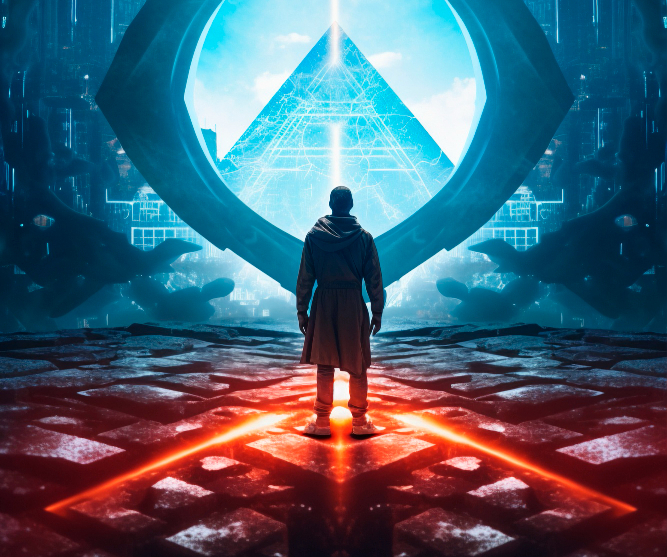In the modern era of gaming, 3D modeling is at the heart of game design. Video game 3D models allow developers to create visually compelling environments, characters, and objects that enhance the player’s experience. Whether you’re working with medium-polygon models or exploring advanced game development techniques, mastering the art of 3D modeling is crucial. This blog will explore everything from the fundamentals of creating models to optimizing them for a wide range of game engines, including mobile platforms like the Nintendo Switch.
1. Why Video Game 3D Models Are Crucial in Game Development
Video game 3D models serve as the foundation for creating interactive experiences. These models are used to populate virtual worlds with objects, characters, and landscapes that players engage with. The quality of your 3D assets can make or break the performance of a game, especially when targeting multiple platforms such as mobile devices, web browsers, and consoles. The process of creating these models is intricate and involves numerous techniques and optimizations to ensure they look great and run smoothly across different systems.
From static background art and objects to animated models, every piece of a game’s world begins as a 3D model. By understanding how to balance polygon counts, textures, and materials, developers can ensure that their games run efficiently on all platforms, regardless of the system.
2. Medium Polygon Models: Striking the Balance Between Detail and Performance
Medium-polygon models are an essential tool in game development, offering a balance between the detailed high-resolution models used in AAA games and the simpler low-poly models found in mobile games. These models maintain enough detail to create realistic-looking objects without requiring excessive processing power, making them ideal for use on platforms like the Nintendo Switch and mobile devices.
The goal with medium polygon models is to maintain visual quality while ensuring the game performs well across various platforms. This requires careful planning and optimization during the modeling process. Too many polygons can overload the system, especially on mobile devices, while too few can result in blocky, unappealing models.
3. Box Modeling: A Key Technique for 3D Artists
One of the most widely used methods for creating 3D models is box modeling. This technique starts with a simple geometric shape, such as a cube or sphere, and gradually adds detail to form the final object. Box modeling is particularly useful for creating medium polygon models because it allows developers to start with basic forms and refine them into highly detailed models.
This approach works well for creating both static and animated models. Once the model’s basic shape is defined, developers can add intricate textures and materials to give the models a realistic finish. The key is to keep the polygon counts low enough to ensure efficient performance while still delivering a visually appealing final product.
Example:
For games running on the Nintendo Switch, medium polygon models created using box modeling ensure high-quality assets without sacrificing performance. The balance between polygon counts and advanced shading is crucial for maintaining a smooth gameplay experience.
4. The Role of Game Engines in Bringing 3D Models to Life
Once your 3D models are ready, they need to be imported into a game engine to become part of the game. Game engines provide developers and artists with the tools they need to integrate their models into the gameplay, handling everything from animations to lighting and physics, allowing the models to interact with the virtual environment.
Elevate Your Game with 3DAiLY
Instead of just focusing on traditional game engines, consider how 3DAiLY can also enhance your game development process. At 3DAiLY, we offer a platform specifically designed to empower game developers by providing custom 3D models tailored to your needs. Our team ensures that your models are optimized for any game engine, ensuring seamless integration and high performance.
Considerations: When choosing a game engine, it’s important to think about the platform you’re developing for. While traditional engines like Unity support cross-platform development for both mobile devices and consoles, and Unreal Engine excels in handling high-fidelity graphics and large projects, 3DAiLY provides a unique advantage. We focus on creating models that are optimized for your chosen engine, no matter whether it’s Unity, Unreal, or another engine, ensuring that you get the best results in terms of performance and visual quality.

5. Optimizing 3D Models for Cross-Platform Development
One of the biggest challenges in game development today is ensuring that 3D models perform well across multiple platforms. Cross-platform development requires that your assets are optimized to run efficiently on everything from high-powered gaming consoles to low-spec mobile devices.
To achieve this, developers need to focus on reducing polygon counts, using smaller texture files, and optimizing shaders and lighting effects. This ensures that the models they create games look good and perform well across all platforms, including web browsers and mobile devices, without overloading the system’s memory or processing power.
6. Static Models vs. Animated Models: When to Use Each
In game development, not all 3D models need to be animated. Understanding when to use static versus animated models can save valuable resources and ensure your game runs smoothly.
- Static models are ideal for background objects that don’t require movement, such as buildings, rocks, or environmental features. They are less demanding on processing power and help maintain game performance.
- Animated models, on the other hand, are used for characters, creatures, and objects that need to move or interact with the player. These models require more complex animation rigs and file formats that support movement, such as FBX.
For most games, a combination of static and animated models is generally used to create a dynamic environment while maintaining efficient processing.
7. Creating Detailed Textures for Game Models
While the geometry of an object in a 3D model defines its shape, the textures determine how the surface of the model appears. Detailed textures can transform a basic model into a highly realistic object by adding surface details such as dirt, scratches, or reflections.
However, detailed textures can also put a bit of a strain on the system, especially on mobile platforms. To balance detail with performance, developers often use smaller texture files that still provide a high level of visual fidelity. Techniques like texture compression and mipmapping allow the game engine to reduce the size of the textures without sacrificing too much quality.
8. Advanced Shading and Lighting Techniques in Game Engine
Advanced shading is crucial for giving 3D models a realistic appearance in-game. Shaders define how light interacts with the surface of materials in the models, creating effects such as reflections, shadows, and highlights. Properly applied, shaders can make a basic medium polygon model appear far more complex than it is.
Lighting, in turn, helps set the mood and focus attention on specific objects within the game. Dynamic lighting can be used to create a sense of realism, making objects react to in-game events like explosions or time-of-day light changes.
Tip: By using advanced shading techniques, you can enhance the detail and realism of your 3D models without increasing the polygon counts, keeping the game efficient across all platforms.
9. Polygon Counts and Their Impact on Game Performance
Understanding polygon counts and their impact on game performance is crucial for creating efficient and visually appealing 3D models. Here’s a detailed breakdown:
What Are Polygon Counts?
Polygon counts refer to the number of polygons used to construct a 3D model. Each polygon contributes to the model’s detail level. A higher count means more detailed and realistic graphics.
High Polygon Counts
Advantages: High polygon counts allow for intricate details and more realistic textures, improving visual fidelity and realism.
Disadvantages: More polygons require increased processing power to render. This can lead to slower performance, especially on mobile devices or older hardware. High polygon counts can cause frame rate drops and affect overall game smoothness.
Low Polygon Counts
Advantages: Models with fewer polygons are less demanding on system resources, which helps maintain smoother gameplay and faster rendering times.
Disadvantages: These models may appear blocky or less detailed, which can impact the visual quality of the game. This is often a trade-off between performance and aesthetics.
Medium Polygon Models
Advantages: Medium-polygon models offer a balanced approach. They provide sufficient detail for a visually pleasing experience while keeping polygon counts low enough to ensure smooth performance.
Best For: These models are ideal for most game development projects, as they strike a balance between visual detail and game performance. They are suitable idea for games made for various platforms, including consoles, PCs, and mobile devices.
Optimizing Models
Techniques: Employ other methods and techniques like level of detail (LOD) and normal maps to enhance appearance without increasing polygon counts. Using efficient textures and shaders can also boost performance.
Considerations: Regularly test your models across different platforms to ensure they meet performance standards without compromising visual quality.
By carefully managing polygon counts, you can create visually appealing 3D models that perform well across diverse platforms and provide an enjoyable gaming experience.

10. The Importance of File Formats in Game Development
Choosing the right file format for your 3D models is crucial to ensure compatibility with your chosen game engine and platform. Each file format has its strengths and limitations, and selecting the wrong one can lead to poor performance or reduced quality.
FBX is a widely used format, especially suited for both static and animated models. Its compatibility with most game engines makes it a go-to choice for projects that involve complex animations and interactions.
OBJ is another popular format, primarily used for static models. It is straightforward and widely supported but lacks the animation capabilities of FBX.
GLTF is gaining traction, particularly for web browsers and mobile devices. It provides a good balance between quality and file size, making it ideal for cross-platform development where efficient performance is essential.
By selecting the appropriate file format for your project, you draw that your Video Game 3D models are rendered correctly and that the game performs smoothly across various platforms. This choice is vital for maintaining visual fidelity and optimizing overall game performance.
11. Optimizing Models for Mobile Devices
Mobile devices have less processing power and memory screen than consoles or PCs, so developers must optimize 3D models for smoother performance. Reducing polygon counts, compressing textures, and using efficient shaders help achieve this.
Example:
Many games on the Nintendo Switch use medium-polygon models with optimized textures to balance performance and visual appeal. Techniques like texture compression and advanced shading ensure high-quality visuals without overwhelming the system. By following these methods, developers can create visually appealing 3D models that run efficiently on mobile devices and other cross-platform systems.
12. Tools and Software for Creating 3D Models
To create high-quality video game 3D models, developers need the right tools. There are several industry-standard software options available, each offering different features for creating, texturing, and animating 3D models:
- Blender: A free, open-source tool that offers comprehensive features for modeling, texturing, and animation.
- Maya: A popular choice for professional game developers, offering advanced animation and shading tools.
- ZBrush: Specialized in creating highly detailed 3D models and textures, often used for character design.
- Substance Painter: Used to create realistic detailed textures for 3D models.
By selecting the right software for your project, you can ensure that your 3D models and render them are of the highest quality and optimized for your chosen platform.
Considerations to Create Video Game 3D Models
When creating 3D models for game development, several key factors should of course be considered to ensure that your models are optimized for performance and visual appeal:
- Polygon Counts: Balance the polygon count to achieve a compromise between visual detail and performance. High polygon counts offer more detail but can impact performance, especially on less powerful hardware. Medium polygon models often provide a good balance.
- File Formats: Choose the right file format for your models to ensure compatibility with your chosen game engine. Formats like FBX, OBJ, and GLTF each have their advantages and use cases. For example, FBX is great for both static and animated models, while GLTF is ideal for web and mobile applications.
- Texture and Shader Use: Optimize textures and shaders to maintain high-quality visuals without overburdening the system. Use techniques like texture compression and efficient shaders to enhance performance while keeping visual fidelity intact.
- Platform Requirements: Consider the target platform for your game. For instance, cross-platform development might require different optimizations compared to games designed for specific systems like mobile devices or consoles. Tailor your models to meet these platform-specific needs.
- Animation and Rigging: If your 3D models will be animated, ensure they are properly rigged and compatible with your chosen game engine’s animation system. This includes setting up bone structures and ensuring smooth transitions and interactions within the game environment.
- Performance Optimization: Implement strategies to optimize performance, such as using level of detail (LOD) techniques to reduce polygon counts for distant objects and employing normal maps to simulate high detail without increasing the actual polygon count.
- Artistic Style and Consistency: Ensure that your models align with the overall artistic style of your game. Consistent art and visual elements help maintain cohesion and enhance the player’s experience.
By keeping these considerations and details in mind, you can create 3D models that not only look great but also perform well across various game engines and platforms.
Bottom Line
Mastering Video Game 3D Models is key to game development success. By balancing detail and performance, developers can create optimized platform models. Whether crafting medium polygon models for mobile or high-resolution assets for consoles, each choice impacts gameplay and visual appeal. Developers who refine their 3D modeling skills will not only produce stunning, efficient models but also enhance the overall gaming experience. This expertise helps games stand out in the competitive market, ensuring the game’s and its creators’ long-term success.
Need custom 3D models for your game? At 3DAiLY, we create high-quality, tailored 3D models for any project. From mobile-optimized models to high-res assets for consoles, our experts bring your vision to life. Contact us today to start building your game world!



